For the reservoir on the site, natural materials are used, for example, sand, clay, black earth and stones. Waterproofing is performed with plastic wrap, walls are made of concrete, plastic. An artificial lake transforms the territory of the site, serves as an original decorative decoration of the landscape. A pond in the country for fish farming and swimming refers to complex structures with a system for supplying, removing water, purifying and oxygenating.
- Benefits of your pond
- Differences between a swimming pond and a pool
- Pros and cons of a dug pond
- Varieties of artificial reservoirs
- Selecting a site to create a reservoir
- How to determine the size of the reservoir
- Diy sketch of the future pond in the country
- Preparation of tools and equipment
- Stages of digging a pond on the site
- How to dig a pit
- How to make a waterproofing film
- Strengthening the shore and planting
- Microclimate and decor
- Launching fish into a pond
- Pond care
- Preparing the pond for winter
Benefits of your pond
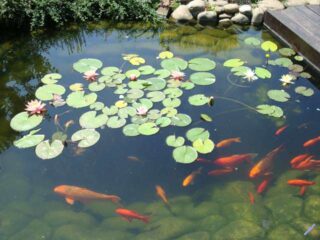
The pond in the courtyard of a private house looks beautiful and adds zest to the site. Many design models are used to highlight the individuality of the property. An artificial lake of small size attracts the attention of guests, pleases the eye of the owner.
The reservoir has practical applications. In the summer heat, the air near the water is cool, so it's nice to spend time under the trees near the pond, plunge into the water. The artificial fish pond on the site of the country house is a great help in supplying the family with food. Breeding, rearing fry, fishing will be beneficial and enjoyable as a pastime.
To fill the pond, water from the drainage system of the site is used if there is a problem of waterlogging. The pond is used all year round - in summer for swimming and in winter for ice skating.
Differences between a swimming pond and a pool
A pond in the yard is made in the form of a decorative pond with fish, lighting, or a swimming pool is built for sports.
A pond can be made suitable for swimming, it has some advantages over a pool:
- looks natural and natural;
- the filtration system excludes cleaning by chemical methods, which are used for the pool;
- construction work and materials are cheaper than for the construction of a pool;
- allows you to breed fish.
Both objects play the role of decoration of the site, but the pool is traditionally built only for swimming. It contains clean water for swimming, and the area around is used for outdoor activities. The pond does not provide for water heating and the construction of an awning.
Pros and cons of a dug pond
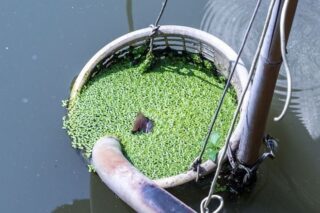
An artificial pond on the site decorates the landscape. The splash of waves creates an atmosphere of serenity, the attractive view of a piece of wildlife gives a wonderful mood. A beautiful pond can be made of impressive dimensions or you can use a small container to create a cozy corner in the yard.
Cons of the pond:
- regular cleaning of algae, leaves, branches;
- weed control around the perimeter;
- preparation for winter, determination of a place for ornamental plants and living inhabitants;
- ensuring the inflow and outflow of water.
To make a do-it-yourself pond on a fish plot will require an investment of time and effort to maintain the attractive appearance and functionality of the picturesque lake.
Varieties of artificial reservoirs
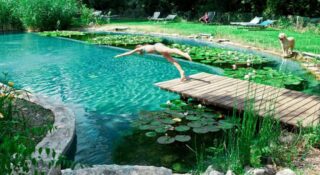
The pond is built without zoning and technical means of cleaning, in some models they create the effect of a surface current. If no auxiliary systems are used, biological organisms are used to disinfect water, for example, zooplankton, plants of a certain species.
Two-volume ponds are built with separation of functional areas. Provide a flow-through recovery zone, separated from the swimming area by partitions not higher than the water level. Streams are regenerated using skimmers, and water is pumped over with pumps. In this case, the bathing area will be larger than in the case of using microorganisms.
Ponds with a complex regeneration system provide for mechanical and natural cleaning. The system includes filters, a control unit for drainage and liquid supply, control and accounting devices.
Selecting a site to create a reservoir
The location of the artificial lake depends on the inhabitants of the reservoir. Flooded areas and lowlands are most suitable. Crayfish prefer shading, so the pond should be dug so that the sun shines no more than half. Localization in an open area will lead to water bloom in the sun. Large amounts of foliage from trees will cause the pump to fail.
When installing technological equipment, the proximity of electricity sources is taken into account. On relief areas, two-level reservoirs are built; on flat surfaces, ponds of various shapes are arranged in plan. The type of soil affects the degree of bank strengthening, for example, super-sandstones and sandstones require additional measures.
How to determine the size of the reservoir
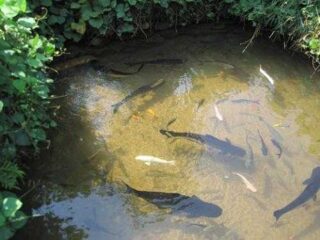
The size of the pond plays a role if fish are to be raised in it. Shallow water structures (less than 1 m deep) are overheated, algae grow in them.
Recommendations for the selection of dimensions:
- the depth and squaring should provide the fish with the required volume for habitation and reproduction;
- the oxygen level depends on the degree of shade and illumination of the reservoir;
- it is better to make a relief bottom, and choose a streamlined pond shape;
- the recommended area of a home lake for a summer residence is up to 25 m²;
- the depth of the fish pond should not be less than 1 m.
Fish farming is a complex process, so building a reservoir in the right place should make it easier.
Diy sketch of the future pond in the country
When designing, a drawing is drawn up, which shows the plan of the pit in a top view. Additionally indicate the steepness of the banks of the deep region, the heating zone, depending on the characteristics of the soil.
Information stated in the project:
- slope angles in accordance with SNiP 2.02.01 - 1983;
- diagrams of water supply, sewer collector with marks of the location of pipes in plan and in height;
- location and power of cleaning devices;
- finding measuring and control devices.
The plan shows where to put decorative elements, build stone slides, make waterfalls.
Preparation of tools and equipment
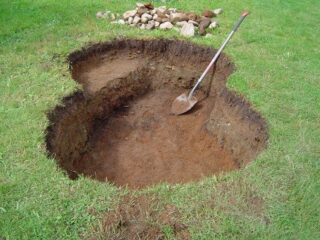
The pit can be dug by hand using a bayonet shovel. In another version, the owner engages specialized earthmoving equipment. Transport will be needed to remove the excavated soil, since usually a large volume is obtained.
Prepare equipment for the operation of the reservoir:
- mechanical filters, drain pump;
- metal or plastic pipes for liquid supply;
- concrete or plastic collectors for the organization of drainage;
- a system that maintains the frequency of water exchange;
- cleaning devices.
For illumination, LED and halogen lamps with sealed waterproof shells are used. There are lamps with automatic color change, devices are placed on the walls or shallow bottom of the pond.
Stages of digging a pond on the site
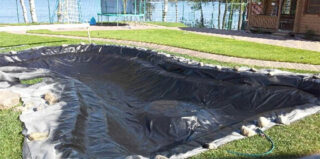
The spring period is well suited for the start of work, so that there is an opportunity to perform a set of works and dam the reservoir. Work can begin as soon as the soil thaws to the depth of the pit.
Step-by-step construction includes stages:
- digging a foundation pit;
- waterproofing the bottom and sides of the pit;
- strengthening the walls of the pit, planting vegetation;
- organization of the microclimate and decoration of the reservoir;
- launching fish and other inhabitants.
Before starting the construction, the contours are marked, a layer of fertile soil is removed. Usually the bed is 10-15 cm high and is used in other growing areas.
How to dig a pit
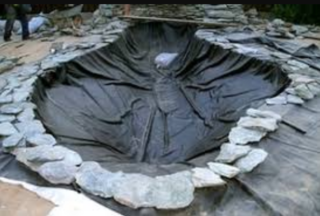
First, a hole is made to the depth required by the project, then they begin to move to the sides, adhering to this size. To maintain the desired size in height, use a construction level.
The depth is recommended to be done 25 - 50 cm lower, so that there is an opportunity to make a sand-gravel underlying layer. The pillow will serve as drainage from flooding of nearby areas.
The walls of the pit are made at an inclination, which is provided for by the drawing, most often the roll is 45 °. The banks are made at the same level, and different heights are provided for when organizing a waterfall. The selected land is taken out of the yard or used for an alpine slide.
How to make a waterproofing film
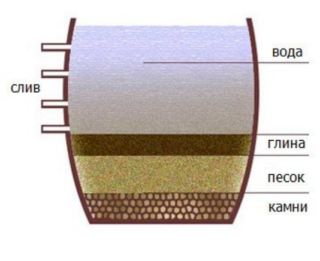
The bottom and walls are sandwiched with a polyethylene membrane so that moisture is not absorbed into the ground. It is recommended to change the film after 5 - 7 years, simultaneously with cleaning it from debris and mud.
Work order:
- the prepared foundation pit is lined with foil;
- on the sides, there are 35 - 40 cm outlets;
- at the bottom, a layer of 10 cm of sand is made over the covered film, then 15 - 40 cm of crushed stone and pebbles are poured.
The inside of the pond can be protected with a clay screen, or with a solution with special water repellents in the composition. On sale there are synthetic mats filled with clay powder, rubberized membranes. The choice of material for waterproofing depends on the owner of the pool and his capabilities.
Strengthening the shore and planting
If the construction of the lake is carried out on a weak sandy soil, the banks are additionally concreted so that the walls do not shatter under the film. You can use concrete only to form the bottom, and lay out the banks with red ceramic bricks. The silicate variety is not suitable because it absorbs moisture.
The concrete is subjected to a shear force from soil crumbling, and the force of frost heaving in winter squeezes out the bottom, therefore, reinforcement is used for laying in the base and for building a frame on the walls. Hard areas are left on the coastal slopes in order to install service equipment and plant ornamental plants.
Microclimate and decor
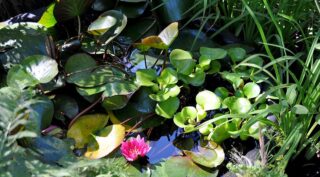
The environment is created by purification and ozonation of water. They choose unpretentious plants that grow at different levels of oxygen and do not react too much to solar insolation. Liquid stagnation is prevented by an artificial stream powered by a submersible pump.
Low conifers, creeping species are planted on the shore, dwarf thuja look good. Cattail and irises are placed on the upper steps. Grass-like plants grow well along the contour and look beautiful. The edge of the rate is decorated with stones of various shapes and sizes, artificial pearls
Plants are planted at the end of May. Placed directly in the soil, use separate pots.
Launching fish into a pond
If you build a pond with your own hands for crucians or carp, you need to check the acidity of the liquid in the pond with litmus paper or special devices. Vegetation saturates the water with air, and the indicator after measurement should be neutral. Carp fish can only be bred in the summer, as in winter they will not survive without special measures.
The fish is not launched immediately after construction, but only after the formation of the silt layer, which will take about a month. There is rarely enough natural food for the fish, so it needs additional feeding. As a result, the ecology of the reservoir deteriorates, more powerful filters are required.
Pond care
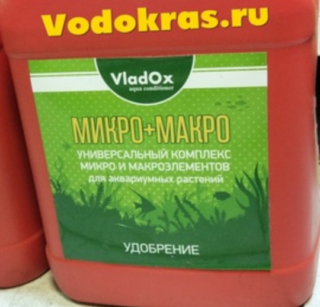
If the cleaning filters and equipment are selected correctly in terms of capacity, maintenance is reduced to periodic flushing of pumps and devices.
Other summer care activities:
- clearing the water surface from debris, branches;
- fertilization of vegetation;
- thinning plants, harvesting unnecessary algae;
- liquid level adjustment.
Water evaporates in heat, and fish needs a certain volume for normal existence. If there is no organized inflow of liquid, it is added manually (up to 10% of the liquid from the total volume). In the fall, a net is pulled between the banks to protect the surface from the abundance of foliage.
Preparing the pond for winter
Before the onset of cold weather, the pond is cleaned of silt, sediment at the bottom. The need to pump out the liquid is determined by the dimensions of the reservoir. Reservoirs of shallow depth (up to 1 meter) completely freeze in frost, so all the plants are taken out of them in the fall, fish are removed with a net, water is pumped out.
The pipelines are purged with air, plugged with foam plugs. Wooden elements become saturated with moisture and tear the ends of the pipes when they freeze. In medium ponds, 2/3 of the liquid is left, and in large ponds it is not pumped out at all.
Shallow and marsh plants are cut off at the root, sedges, cannes, irises, cyperuses are removed and put for wintering in dark rooms. The reeds are left in the water so that oxygen flows through the hollow trunks for hibernating organisms and fish. Also leave a yellow egg capsule, water lily, marigold, calamus, duckweed for the winter.








